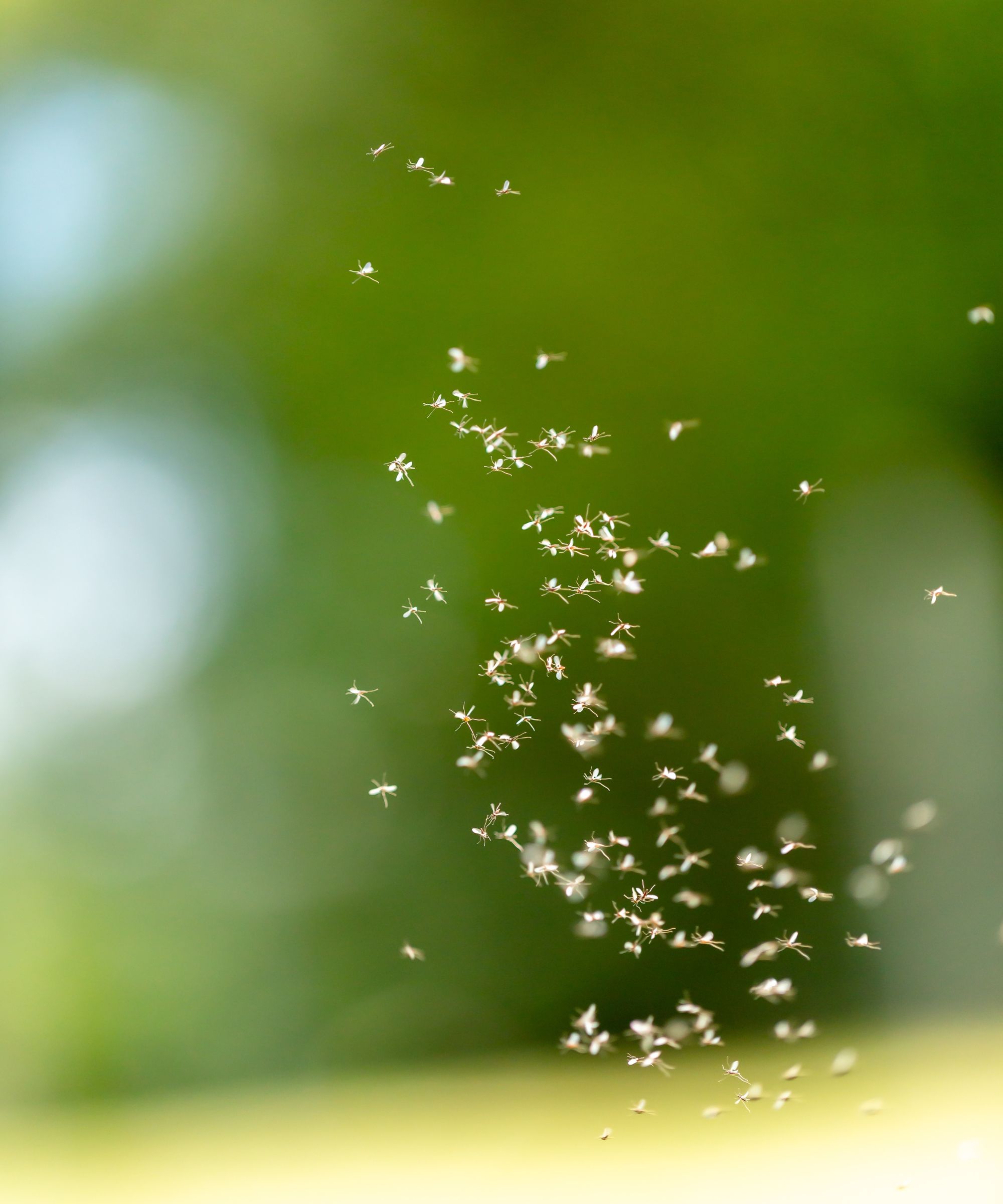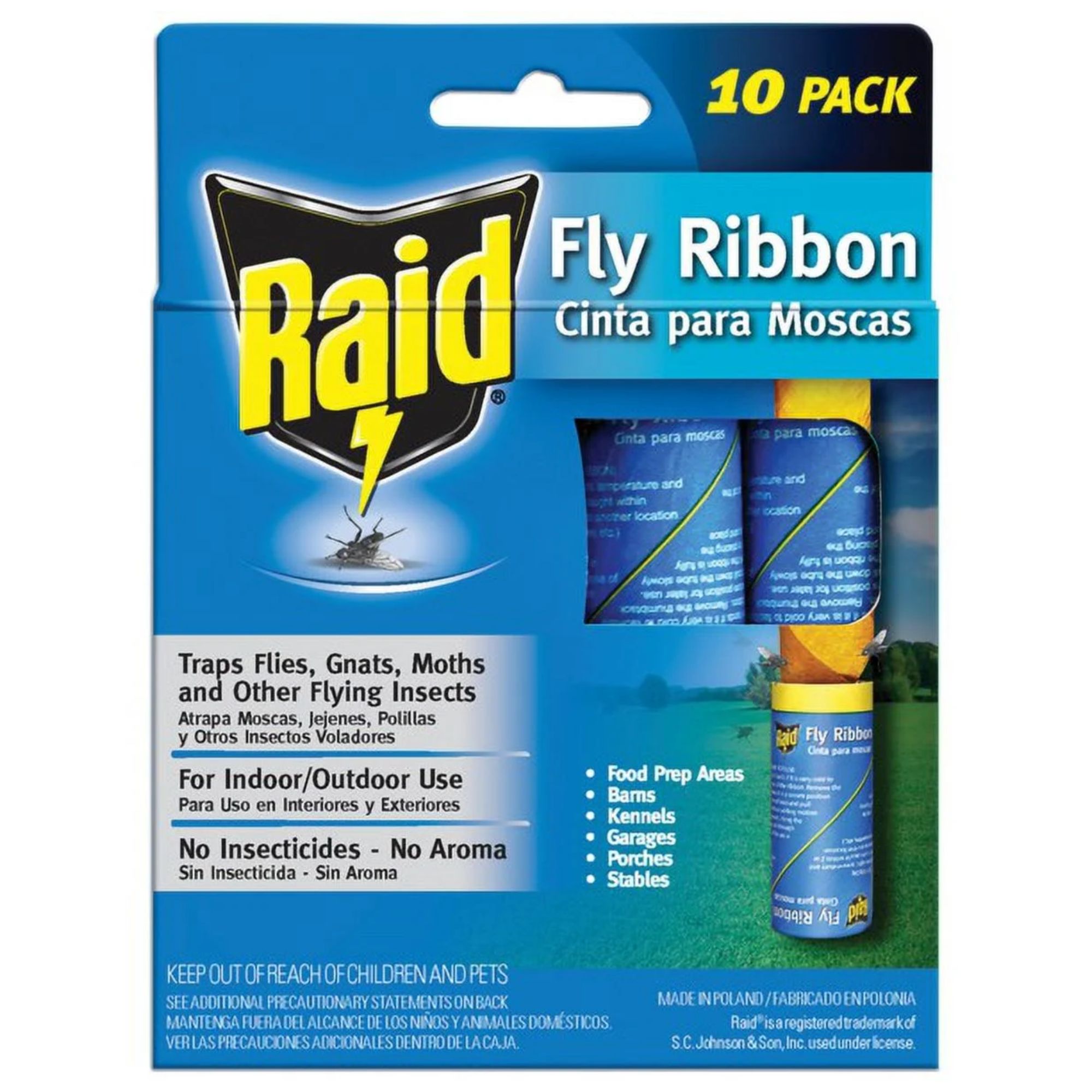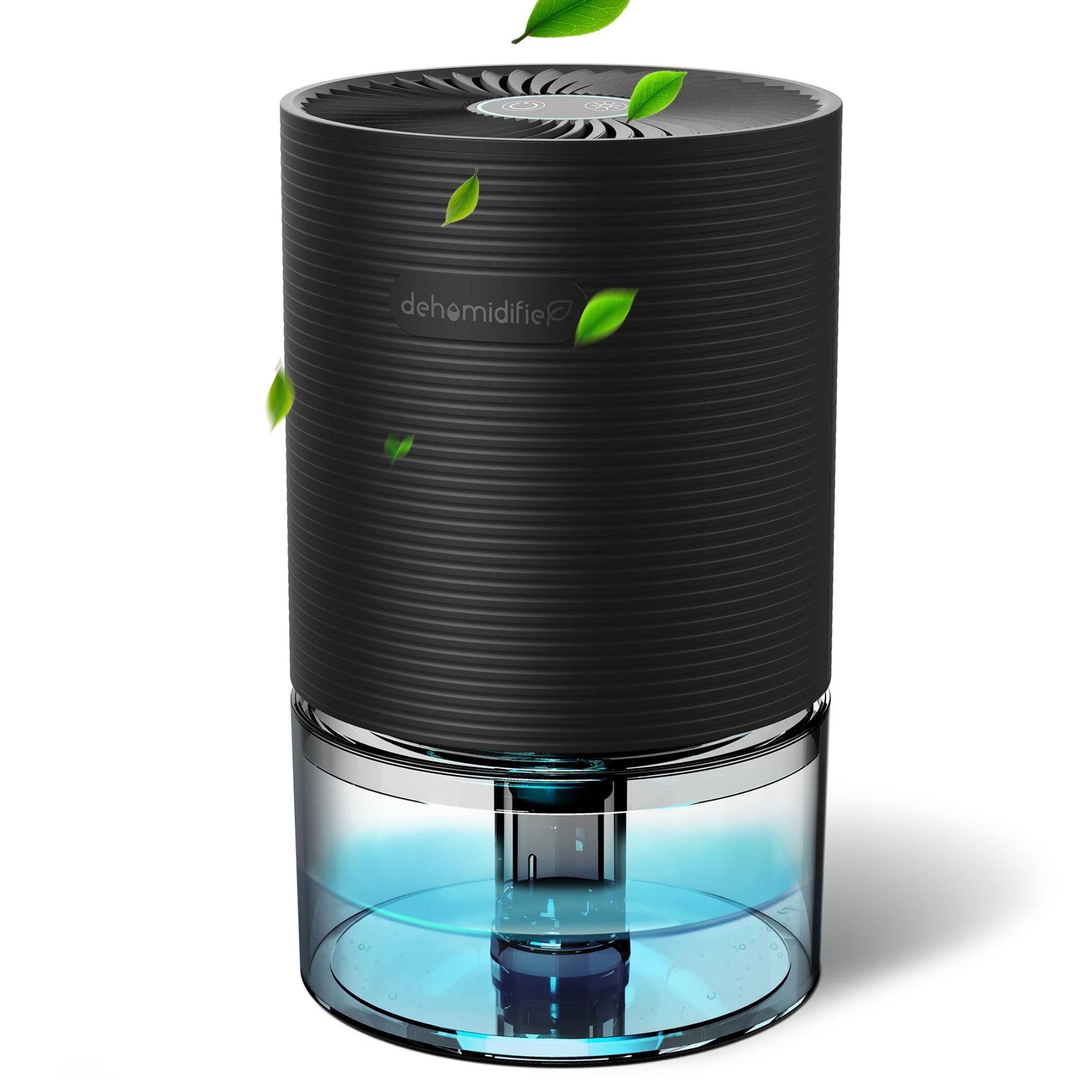How to get rid of gnats – 9 easy methods pest control pros and entomologists love
Take action swiftly before an infestation takes hold


1 July 2025: We added more expert commentary to this article to help readers better understand why they have gnats in their house, as well as more useful products to help you banish gnats with the nine various methods shared by our pest control pros.
If you're searching for information on how to get rid of gnats, it's likely these pesky insects have been flitting around and annoying you for a while, or seemingly have appeared out of nowhere.
While 'gnat' is the blanket term often used to describe these small, annoying flies that infest drains and rooms, they are, importantly, not all the same or in your home for the same reason. Understanding their sub-type and exactly why they've set up home where they have will help you effectively get rid of any gnat infestations and keep them gone for good.
Here, pest control experts and entomologists reveal nine methods to deal with these common indoor pests, so you can banish the pesky bugs from your home.
How to get rid of gnats
Identifying gnat types
First, take a look at the gnats so you know what you’re dealing with, advises Damian Marcelo, certified entomologist at Fox Pest Control. ‘Fruit flies are approximately one-eighth of an inch long and are tan to brown in color,' he explains. ‘They will have either red or black eyes and will rest in areas with little to no airflow. When they are at rest, they will quickly fly away when disturbed.
‘Fungus gnats are smaller than fruit flies and about one-sixteenth of an inch long and are a gray to black color. They will typically be found around live house plants and areas with little to no airflow. They don’t sit still long, and when swatted, they will just about disappear from the force.
‘Drain flies, also known as moth flies, are approximately one-eighth of an inch long and are a gray color. When they are at rest, their wings will be situated in a heart-shaped pattern. If they are crushed, there will be a powdery residue left behind.
‘Red-eyed fruit flies typically will seek out over-ripe fruits and vegetables to feed and lay their eggs in, black-eyed fruit flies will feed/lay eggs on fruits and vegetables as well, but will also seek out other forms of decaying organic matter. Fungus gnat adults will feed on flower nectar, and as the name implies, larvae feed on fungi found in soil and on plant roots. Drain flies feed on decomposing organic matter and sewage.’
Design expertise in your inbox – from inspiring decorating ideas and beautiful celebrity homes to practical gardening advice and shopping round-ups.
Once you've identified the type, you can pick the most suitable and convenient way to get rid of gnats for good. Here's nine from our pros.
1. Deep clean drains and reduce humidity

Reducing moisture sources and banishing odors from your drains will deter gnats
Gnats love moisture, so they will often be found hovering around your drains, both in the kitchen and the bathroom.
As David Price, associate certified entomologist and technical director at Mosquito Joe, a Neighborly Company, explains, ‘Moisture brings gnats to the house because their eggs need it to survive.
‘Typically, overwatered houseplants, clogged drains, dirty garbage disposals, garbage bins, and recycling bins are perfect harborage. Once temperatures average 70 to 72ºF outside, it’s a perfect environment for egg-laying and developing these gnats.
‘The adult fungus gnat will swarm and meet up as the male inseminates the female, and she can lay up to 200 eggs in a houseplant pot, or anywhere damp, decaying organic matter is found.’
Drain flies, meanwhile, might fly out of a kitchen or bathroom sink when disturbed since they are – you guessed it – attracted to the environment of the drain.
Therefore, cleaning kitchen sink drains and cleaning bathtub drains to get rid of drain flies regularly is an easy fix.
To help get rid of gnats, Jim McHale, CEO and president of JP McHale Pest Management, suggests, ‘Using enzyme-based cleaners [such as the Pro-Grade Multi-Purpose Probiotic Enzyme Cleaner available at Amazon] to break down organic matter in the drains that will attract future flies. Importantly, never pour bleach directly down your drain if you think you have drain flies.'
He adds, ‘Repair any leaking pipes and make sure there is no standing water in food prep stations. Standing water creates an ideal breeding ground for drain flies. You can install fine mesh screens over drains to prevent adult flies from entering and laying eggs.' We recommend the number one top rated LASSHSWA Kitchen Sink Strainer available at Amazon for this.
An easy way to determine if the sink drain is a problem source is to set up a petroleum trap. Simply smother the inside of a small plastic cup with petroleum jelly, such as the Vaseline 100% Pure Petroleum Jelly available at Walmart, and put it upside down over the drain, so the drain is completely covered. Any gnats and flies that try to escape your cleaning solution will instantly be trapped and stuck in the jelly, preventing them from making a home anywhere else in your home.
You can also try using a commercial drain cleaner, such as Liquid Plumr, available at Walmart, to help dissolve grease and built-up food waste, and get rid of any nasty odors drawing gnats in. Alternatively, for a quick green cleaning approach, try cleaning with white vinegar. Pour half a cup of baking soda into the drain and follow up with one cup of white vinegar. Place a damp cloth, such as the Great Value Multipurpose Microfiber Household Cleaning Cloth available at Walmart, over the plughole to ensure the reaction travels down into the pipes rather than overflowing into the sink.
Additionally, another effective way to get rid of sources of moisture and reduce your home's humidity is by investing in the best dehumidifier you can afford. We recommend the Waykar Dehumidifier, available at Amazon.
2. Keep food covered and counters clean

Keeping surfaces clean is crucial when it comes to getting rid of gnats
If you're dealing with a significant gnat problem, there will usually be something drawing them in. If it is not your drains, then it is likely bad food or dirt.
‘Gnats are all about scent,’ says entomologist David. ‘They are attracted to the smells of ripening fruit and vegetables. They are also drawn to the decaying fruit and vegetables that may need to be appropriately covered in your garbage bin.
And, as pest control expert Jim reminds us, ‘Fruit flies breed in fermenting organic debris.'
Therefore, he directs, 'Clean up any spills or remnants of sucrose immediately and remember to change interior garbage bags frequently, especially during the summer months.' Use strong and durable bags to prevent odors from escaping, such as the Hefty Strong 30-Gallon Trash Bags available at Amazon.
In some cases, adds David, gnats can actually be imported from grocery stores and farmers markets, so inspect your fruit and vegetables carefully before storage, and give them a quick rinse and dry where necessary.
When getting rid of fruit flies, it is also a good idea to wash dishes or put them in the dishwasher promptly, close the door straight after use, and keep leftovers covered. Store fruit correctly and throw out or use any overripe pieces as soon as you spot them.
The popular Prep Naturals 26-Piece Glass Food Storage Containers available at Walmart will also stop flies from infiltrating your home.
Don't forget to cover your trash, either, as hiding a trash can in a kitchen does more than boost your room's aesthetics. It also helps prevent pests such as gnats from infiltrating your trash bin and bothering your home.
Using a trash can with a secure lid to help mask trash can smells will work, but keeping your trash can inside a cabinet or drawer built into your kitchen is even more effective.
Additionally, Emma Grace Crumbley, entomologist at Mosquito Squad adds that it's not just old or rotting fruit that gnats are attracted to – it's any fruity scent, including your body wash, perfume and even your shampoo. 'To combat this, use unscented soaps,' she advises, such as the Dove Original Deep Moisturizing Beauty Bar Soap available at Walmart.
3. Use sticky traps

Sticky traps are an easy and fuss-free way to trap and get rid of gnats for good
If you have dealt with whatever is drawing gnats into your home, but there are still some remaining offenders buzzing around, sticky traps can be the perfect solution. Gnats are attracted to bright colors, meaning yellow sticky squares are perfect for drawing them in and trapping them.
In particular, use sticky traps, such as the Zevo Flying Insect Indoor Fly Trap available at Walmart, around areas of high activity, such as your houseplants and drains, to eradicate any lingering pests.
Punteha van Terheyden, head of solved, spotted a few gnats in her small home office after bringing a new plant home. She says, 'I used the sticky fly traps in all my plant pots and this caught the few offenders that had snuck their way into my home on the new addition. This stopped a gnat infestation in its tracks.'
4. Make a vinegar trap

Vinegar traps are an all-natural and effective way to deal with gnats
The simplest way to get rid of gnats with white vinegar is to make a DIY trap to lure and trap them, begins Tom Dobrinska, a board-certified entomologist with Elrich Pest Control.
He says, 'Vinegar traps can be made by placing a small amount of apple cider vinegar [available at Walmart] in a clear bowl or jar. Cover the top tightly with plastic wrap and poke several holes in the top, which will allow the adult gnats to enter but will not allow them out.'
We recommend the Glad Press'N Seal Plastic Food Wrap available at Amazon for this, as it features Griptex technology for a secure fit.
'There are also commercially available vinegar traps,' adds Tom, such as the Aunt Fannie's FlyPunch Fruit Fly Trap available at Amazon. 'These will help eliminate the fruit flies one at a time.'
5. Try a candle trap

Like most flying insects, gnats are attracted to bright lights and colors
As gnats are attracted to bright colors and lights, you can also use a candle to draw them in and trap them. 'One of my favorite tricks is to set a candle in a dish of water and dish soap, then light the candle an hour or so before bed time,' says Dan Bailey, president of WikiLawn Austin Lawn Care. 'This should attract most of the gnats in the room to the light to drown in the water, ensuring your space is gnat-free.'
To make a candle trap, place a tall candle, such as the Stonebriar Collection Unscented White Pillar Candle available at Walmart, in a holder in a dish full of water. Then, light the candle and turn off all the other lights. Gnats will be attracted to the flame and be burned, or dazed enough to fall into the water below.
Remember to never leave lit candles unattended and always blow the flame out when leaving the room. You can also use citronella in your home to repel gnats, mosquitoes and other pesky insects.
6. Try dissuading scents

A quick spritz of an essential oil can help to deter gnats from entering your home
Scott Williams, pest control expert and owner or Private Exterminator NYC, says, ‘For indoor spaces, I've found that a combination of UV light traps and essential oil diffusers (think citronella, lemongrass, or eucalyptus) can be highly effective. These methods are eco-friendly and safe for use around children and pets.’
Peppermint oil is also a great natural pest control option, especially when made into a bug spray with water and a few drops of liquid dish soap, such as the Dawn Ultra Liquid Dish Soap available at Walmart. From using peppermint oil to get rid of mice to getting rid of cockroaches, peppermint has the wonderful ability to deter pests from entering your home and bothering you in the first place.
To use peppermint oil, such as the Majestic Pure Peppermint Essential Oil available at Walmart, to get rid of gnats, spray the essential oil around your garden, windows, and doors, frequently reapplying when necessary, to deter pests from approaching your property. This method is best paired with other preventative measures or removal methods to ensure your gnat problem is properly taken care of.
7. Avoid overwatering plants

The moist soil of your houseplants unfortunately makes for an ideal breeding ground for gnats
If dealing with an infestation, you may have noticed your houseplants becoming a hotspot for gnats, and it's no surprise. The moist soil offers an ideal breeding ground for fungus gnats, which can, in turn, make it particularly difficult to get rid of gnats in plants.
To do so, you'll need to allow the soil to dry out completely between watering your plants, to create a less hospitable home for them.
Scot Hodges, vice president of professional development and technical services at Arrow Exterminators, explains, 'Fungus gnats are more associated with house plants,' as they love damp soil and normally feed on decaying organic material.
Therefore, taking away this damp soil and using a moisture level indicator such as the XLUX Soil Moisture Meter available at Amazon is often an effective enough way to get rid of fungus gnats. Using cinnamon in the soil is also said to get rid of gnats in the house.
Additionally, get rid of any old leaves or flowers that gnats will feed on, as well. While they are irritating, do bear in mind, however, that the gnats won’t damage the plants themselves, although they can damage plant cuttings if you’re cultivating new ones.
If the flies are already well-established, you might need to kill off the larvae with biological control, using nematode worms, which seek and destroy the maggots and are safe to use around both humans and pets.
Helpfully, entomologist Emma adds, 'There is a long list of plants that you can have around your home that will deter gnats, such as geraniums, lemon thyme, lavender, and Mexican marigold.'
8. Seal up entry points

'Caulk is your best friend'
'Caulk is your best friend if you need to seal entry points throughout your home,' advises entomologist Emma. 'It's inexpensive and can be used around window frames, air intakes, and exhaust grills. Additionally, use caulk to patch small cracks,' which are key entry points for gnats.
We recommend the GE Advanced Silicone Caulk available at Amazon for this.
9. Call in the professionals

Knowing when to call in the professionals can get to the root of the problem quickly
Finally, sometimes, despite your best efforts, you'll notice signs it's time to call pest control.
'As always, if infestation gets to the point where these basic remedies won’t work, it's time to call a professional to get to the root of the problem and clear your home of these unwanted pests,' advises entomologist Emma.
If the issue is stressing you out, has gone on for a while, or the gnat infestation has returned, these are some of the key signs you should hire in a professional pest controller to eradicate the problem for you.
Gnat banishing essentials
All prices were correct at the time of publication.

This natural insecticide is safe for use around kids and pets, when used as directed, without any added dyes, fragrances, or harsh chemical odors.

Mix up cleaning and pest prevention solutions in these eco-friendly and reusable glass spray bottles, which feature UV-protection to prevent ingredients degrading.

This fly ribbon is suitable for both indoor and outdoor use, and catches over 100 flies per ribbon with no insecticide and no aroma.

This waterproof all-purpose sealant is ready for water exposure in as little as 30 minutes, and is mold and mildew resistant, and won't yellow, shrink or crack over time.

Once you have dealt with the source of the moisture problem, use a dehumidifier to dry the air and prevent gnats from coming back or lingering.

Using a set of essential oils allows you to experiment with different scents and see what works most effectively when it comes to banishing gnats in your space.
FAQs
Why do gnats multiply so quickly?
The reason why a home can be quickly infested is the speed with which gnats breed. ‘Flies reproduce quickly, so once one or two are observed, the time from laying the eggs to adult can happen in a few days, and numbers will continue to increase while breeding sites and food sources exist,’ explains Scot Hodges from Arrow Exterminators.
Where do gnats lay eggs?
Gnats typically lay eggs in food sources, for the larvae to feed on once hatched, advises Scot. ‘Eliminating that food source and breeding site is usually the quickest way to eliminate them.’
Damian Marcelo adds, 'A female fruit fly will lay over 500 eggs in her lifetime, and those eggs will hatch approximately 24 hours later.'
Meet our experts

Scot Hodges has more than 24 years experience in the Pest Control Industry serving in various operational capacities including sales, service, and management, and currently serves as the director of professional development within Arrow Exterminators’ Arrow University. He earned his Associate Certified Entomologist (ACE) through the Entomological Society of America.

JP McHale Pest Management has provided science-based solutions to pest problems in the New York City area since 1971, and is featured in The Spruce, Real Simple, Forbes Home and more.

Emma has been an entomologist at Mosquito Squad for over three years, with a background as an insect zookeeper and lepidopterist, which is a person who collects or studies moths and butterflies.

Mosquito Joe was founded in 2010, with a team of trained pest control experts who are passionate about getting rid of pests swiftly and thoroughly.
One of the biggest pest control mistakes you can make when dealing with irritants such as gnats is leaving the problem to worsen. It is highly unlikely that gnats will ever go away on their own if they find somewhere to live.
You should act to get rid of gnats as soon as you spot one or two lingering around your home to avoid them multiplying rapidly. Check for entry points and trap and kill any offenders in your home before it becomes an infestation.

Ottilie joined Homes & Gardens in 2024 as the News Writer on Solved, after finishing a Master's in Magazine Journalism at City, University of London. Now, as the Sleep Editor, she spends her days hunting deals and producing content on all things sleep – from mattresses and sheets to protectors and pillows, all of which she tests in her own home. She also has particular expertise in home fragrance, covering everything from candles to reed diffusers.
Previously, she has written for Livingetc and Motorsport Magazine, and also has a Master's degree in English Literature and History of Art from the University of Edinburgh, where she developed a love for inspiring interiors and architecture.
- Chiana DicksonContent Editor
- Punteha van TerheydenHead of Solved